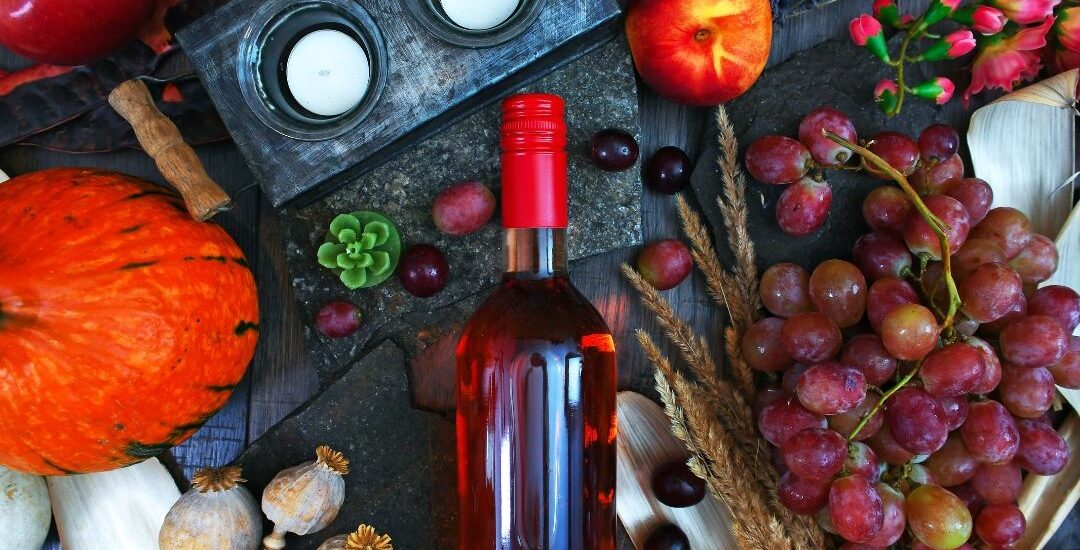The global fruit wine market size is expected to rise at a CAGR of 10.4% over the forecast period 2024 to 2034. The market is anticipated to attain a valuation of US$ 2,486.7 million by 2034 from US$ 921.0 million in 2024.
Fruit wine demand is projected to rise rapidly through 2034 with changing consumer preferences worldwide. A surging inclination toward artisanal and unique beverages is anticipated to drive growth.
In an attempt to broaden their horizons while avoiding sticking to standard drinks, millennials are becoming more willing to try new things. Fruit wines’ unique and vibrant flavors would make them a nice change of pace from their well-known grape-based competitors. These are meant to assist a substantial clientele that wishes to experiment with several beverage options.
Unlock Insights – Request Your Report Sample Today! https://www.futuremarketinsights.com/reports/fruit-wine-market
Key Fruit Wine Market Trends and Analysis
- The burgeoning locavore movement would push demand for artisanal fruit wines that are made locally
- As fruit wines are considered healthy options with the inclusion of vitamins and antioxidants, their demand would rise
- The e-commerce boom globally has pushed direct-to-consumer sales, thereby helping producers establish direct connections with their consumers
- Fruit wines are set to be increasingly common in food pairings as millennials discover how well they mix with different types of food
- Fruit wines from certain regions are becoming highly popular, reflecting their cultural influences and offering consumers a wide range of possibilities
- Winemakers are experimenting with fruit blends to create exciting and inventive combinations that meet the changing tastes of consumers
- Fruit wines that are tailored to individual preferences and produced in small batches are becoming a growing trend across the globe
Key Drivers of the Global Fruit Wine Market
- Consumers Are Looking for Balanced Flavors and Local Crops
In several parts of the globe, especially in developing countries, sweet fruit wines are mainly made of cane sugar to sweeten the beverages and boost their alcohol content. It is quite challenging to capture the intricacy and flavor of the fruit when there are significant sugar additives.
Recently, professional vintners have started fermenting local fruit in dry styles other than the usual wine grapes. They are primarily drawn by contemporary artisan trends and evolving consumer preferences. The outcome is thoughtful, well-balanced wines that can surprise even die-hard wine enthusiasts.
A fresh generation of fruit wines is set to arrive, ranging from ripened apples that taste like Chardonnay to blueberry bubbles made using the classic process. This is attributed to the ‘drink local’ movement that enables winemakers to expand their income from crop production to orchards.
- Launch of Limited Editions and Collaborations between Brands
The global fruit wine market will likely witness the launch of limited editions and the engagement of companies in collaborations. Key wine producers are projected to expand their presence in the market by engaging in partnerships and collaborations with social media influencers, artists, chefs, and celebrities.
Such collaborative efforts are anticipated to lead to the development of sweet sangria wines and Armenian pomegranate wines that are distinctly stamped with the collaborator’s touch and the winemaker’s skills. The blend of unique perspectives is projected to help improve the product’s quality and attract modern wine enthusiasts.
Key players are further set to gain a competitive edge with the launch of limited-edition fruit wines. These are often introduced in small batches as renowned wine producers focus on the scarcity-driven approach to attract more consumers.
Our Experts Provide You Customized Reports: https://www.futuremarketinsights.com/customization-available/REP-GB-18748
Factors Hampering Fruit Wine and Fruit Basket Sales
- The lack of awareness of several types of fruit wines, especially in emerging economies
- Market entry can be hampered due to the implementation of strict labeling norms in certain parts of the globe
- One obstacle would be dispelling the myth that fruit wines are not as good as classic grape wines
- The reliance on the seasonality of fruit availability can create several production issues
- As fruit wines are expensive compared to their conventional grape-based counterparts, their sales can decline in certain countries
- Renowned grape wine companies, with their strategic product positioning, can restrict the market entry of fruit winemakers
Competitive Landscape
The fruit wine market presents a dynamic and competitive landscape where established wineries leverage their brand reputation and distribution networks. Boutiques and artisanal producers would emphasize craftsmanship and unique flavors. Innovative start-ups are set to drive novelty and creativity.
Global and regional players are expected to broaden their portfolios. On the other hand, sustainability-focused brands would emphasize eco-friendly practices.
Several companies across the globe are anticipated to employ diverse marketing strategies to capture consumer attention. Success in this competitive fruit wine market relies on a blend of product innovation, quality, branding, sustainability initiatives, and meeting evolving consumer preferences for distinct and high-quality fruit wine experiences.
Product Launches and Key Developments
- In September 2023, Aldi introduced a brand-new rosé wine that is an ideal beverage for those who enjoy sweets. The latest addition to the low-cost retailer’s vast wine selection is the Castellore Dolce Amore Rosé. It is promoted to taste just like the traditional fruit salad candies.
- In September 2023, Manang Beverages released Manang Valley Wine. It is a genuine monument to the splendor of the surrounding environment and the commitment of the Manang Valley’s farmers. Manang Valley Wine is made from the best apples that are cultivated in the immaculate Manang Valley.
- In August 2023, renowned chef Katie Lee Biegel unveiled Kind of Wild, a wine brand offering zero-sugar, low-calorie drinks. Three white wines, four red wines, one rosé wine, and one sparkling wine are all part of the line.
Maximize growth potential! Grab your discounted report today https://www.futuremarketinsights.com/checkout/18748
Fruit Wine Market Outlook by Category
By Product Type:
- Apple Wine
- Pear Wine (Perry)
- Cherry Wine
- Strawberry Wine
- Blueberry Wine
- Blackberry Wine
- Raspberry Wine
- Elderberry Wine
- Plum Wine
- Peach Wine
- Apricot Wine
- Currant Wine
- Tropical Fruit Wines
- Lychee Wine
- Cranberry Wine
- Orange Wine
- Nettle Wine
By Wine Category:
- Fermented Fruit Wine
- Distilled Fruit Wine
- Preparation Fruit Wine
- Sparkling Fruit Wine
About Future Market Insights (FMI)
Future Market Insights, Inc. (ESOMAR certified, recipient of the Stevie Award, and a member of the Greater New York Chamber of Commerce) offers profound insights into the driving factors that are boosting demand in the market. FMI stands as the leading global provider of market intelligence, advisory services, consulting, and events for the Packaging, Food and Beverage, Consumer Technology, Healthcare, Industrial, and Chemicals markets. With a vast team of over 400 analysts worldwide, FMI provides global, regional, and local expertise on diverse domains and industry trends across more than 110 countries.
Contact Us:
Future Market Insights Inc.
Christiana Corporate, 200 Continental Drive,
Suite 401, Newark, Delaware – 19713, USA
T: +1-845-579-5705
For Sales Enquiries: sales@futuremarketinsights.com
Website: https://www.futuremarketinsights.com
LinkedIn| Twitter| Blogs | YouTube





